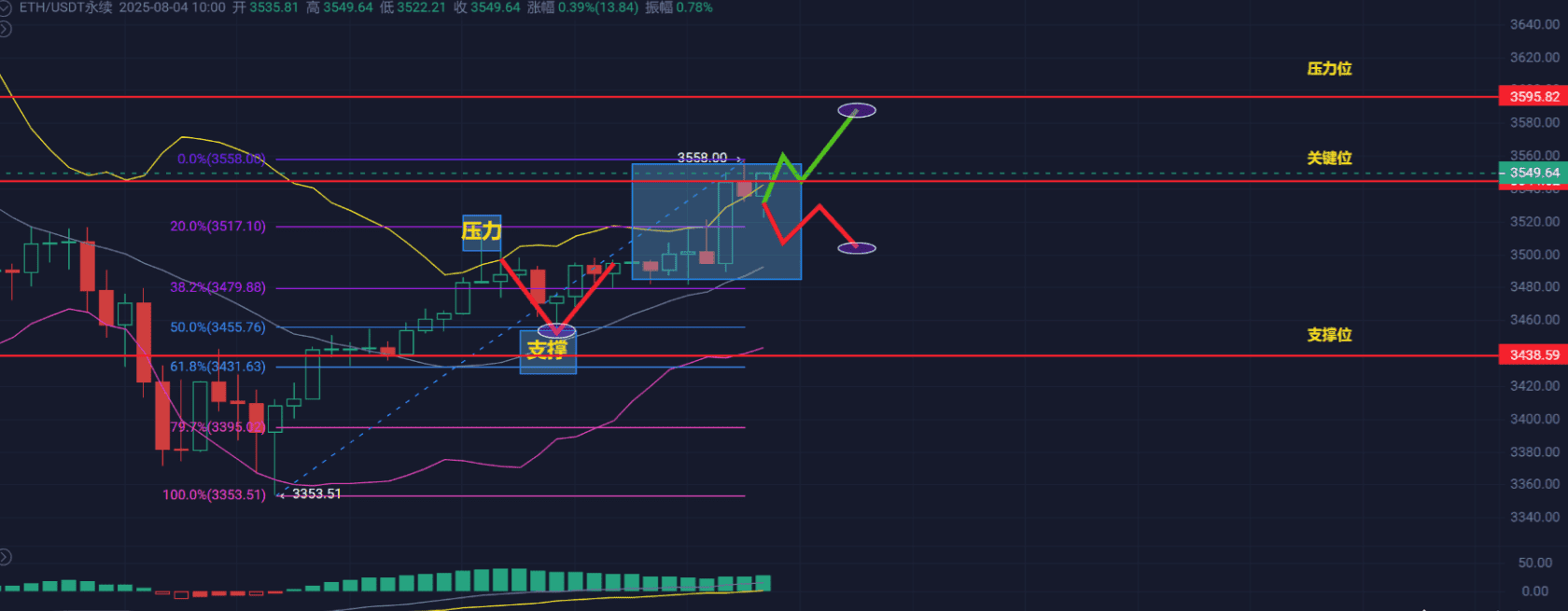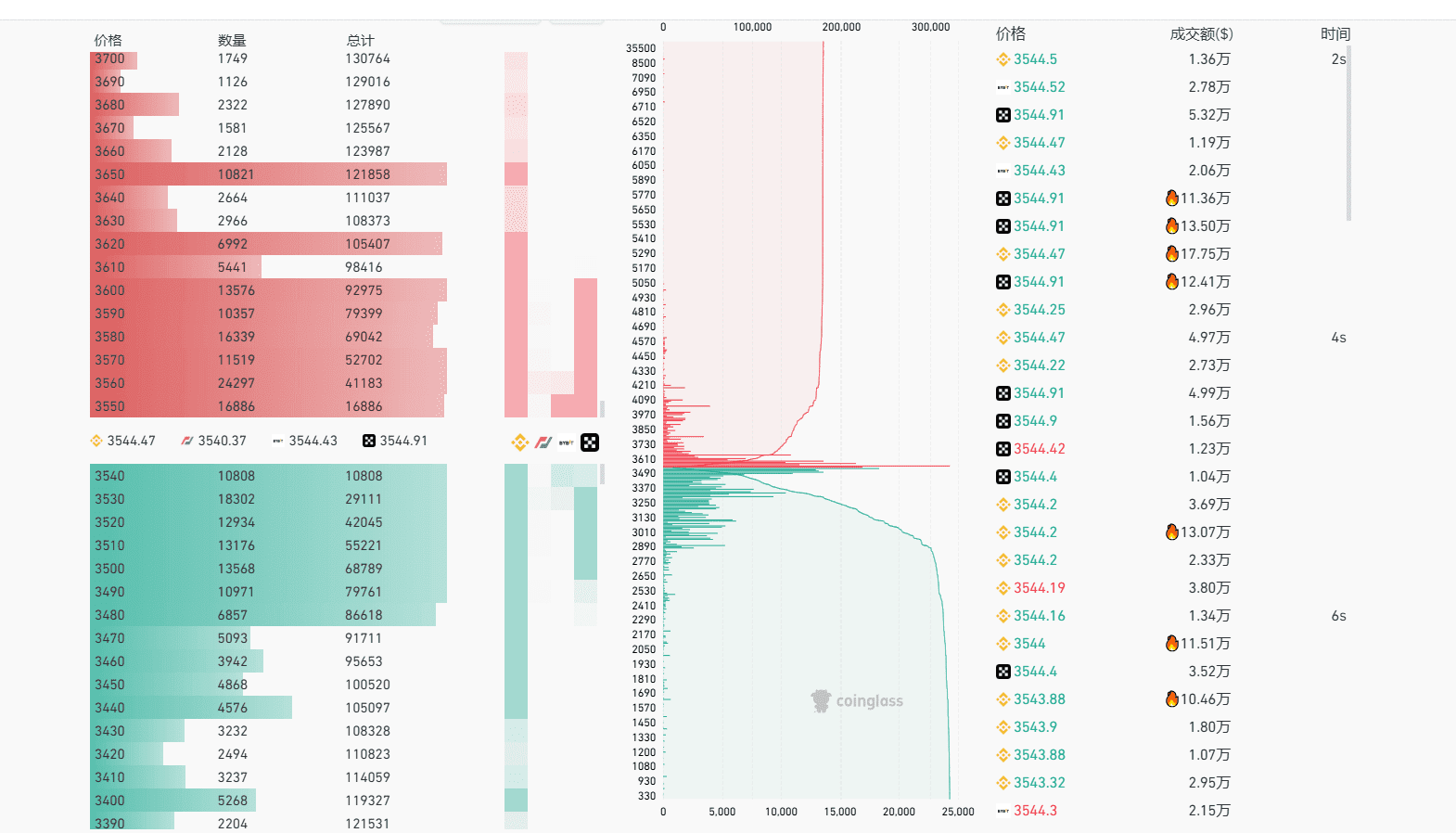1. Policy black swan strikes, the market presents the 'dance of the blade'
On August 4, the Trump administration made a significant move, releasing the 'tariff nuclear bomb' policy: the comprehensive tariff rate on Chinese goods skyrocketed to 54%, and the EU auto tariff rose to 20%, causing global risk assets to plummet sharply. Ethereum fluctuated violently near the key support level of 3550 USD, with a technical EMA death cross combined with enhanced MACD bearish momentum, forming a typical 'death cross' pattern.
This market reminds people of the 27% single-day crash of ETH during the tariff shock in February 2025, but this trend is different:
Institutional buying support: Large institutions like BlackRock continue to absorb chips through ETH spot ETFs, with a net inflow of up to 5.4 billion USD in July, setting a record high;
Technological innovation counters the bearish sentiment: After the EIP-5005 upgrade, throughput increased to 3000 TPS, and ZK-Rollup's daily processing capacity reached 120 million transactions, with performance advantages becoming a solid shield.

2. Three major focal battlefields of the long-short showdown
Tight liquidity and institutions picking up at low levels
Increased pressure on miners: The US imposes a 25% tariff on Chinese mining machines, resulting in a 30% increase in equipment costs for North American mining sites, putting many small and medium-sized mines under survival pressure.
Whales buying against the trend: On-chain data shows that on August 2, two new addresses bought 68,000 ETH against the market, suspected to be institutions building positions at low levels.
Technical 'death cross' key support contest
The 3431 USD support level has become a key boundary for long and short positions; if it falls below, it may further test the 'golden pit' of 3300-3350 USD.
Analyst van de Poppe predicts: there is a 70% chance that ETH will stabilize above 3300 USD, with another 30% chance of falling to 3000 USD before rebounding.
Regulatory pressure remains severe
The US may bring Staking activities under securities regulation, but the pass rate for ETH spot ETFs remains as high as 85%.
In comparison, Bitcoin mining is more affected by tariffs, and hash power may shift to Southeast Asia, which indirectly benefits the ETH ecosystem.
3. Retail survival strategy: The wisdom of shining brightly
Short-term operation: '3430 USD defense line': If the hourly close is below this point, it is recommended to stop-loss and wait; if it breaks through the 3650 USD pressure with increased trading volume, a small position long can be tried.
Long-term layout, focusing on two key indicators:
1. Has the miner surrender index hit bottom?
2. Changes in the premium rate of stablecoin USDT.
Risk hedging
Use ETH options for volatility arbitrage, while buying 3400 USD put options and selling 4000 USD call options to hedge against extreme risks.
4. Abyss or Cloud? Insights from historical cycles
During the 2018 trade war, the ETH price plummeted by 94%, followed by a 25-fold increase over the next three years. Currently, the market shows three major divergences:
Price and hash power divergence: Overall network hash power reaches a new high, but prices are adjusting, similar to the period before the '312' crash in 2020;
Retail and institutional divergence: While retail investors panic-sell, institutions continue to buy through ETFs;
Divergence in US-China policies: US regulation is tightening, while Hong Kong is accelerating the approval of Web3 funds.

Wise saying:
The tariff storm strikes, and those high-leverage speculators are the first to suffer; but those who stand firm are always the forces rooted in technological innovation.
Follow us, with top teams providing support, only to assist the dreamers with passion! #以太坊ETF连续12周净流入 #Solana期货交易量创新高